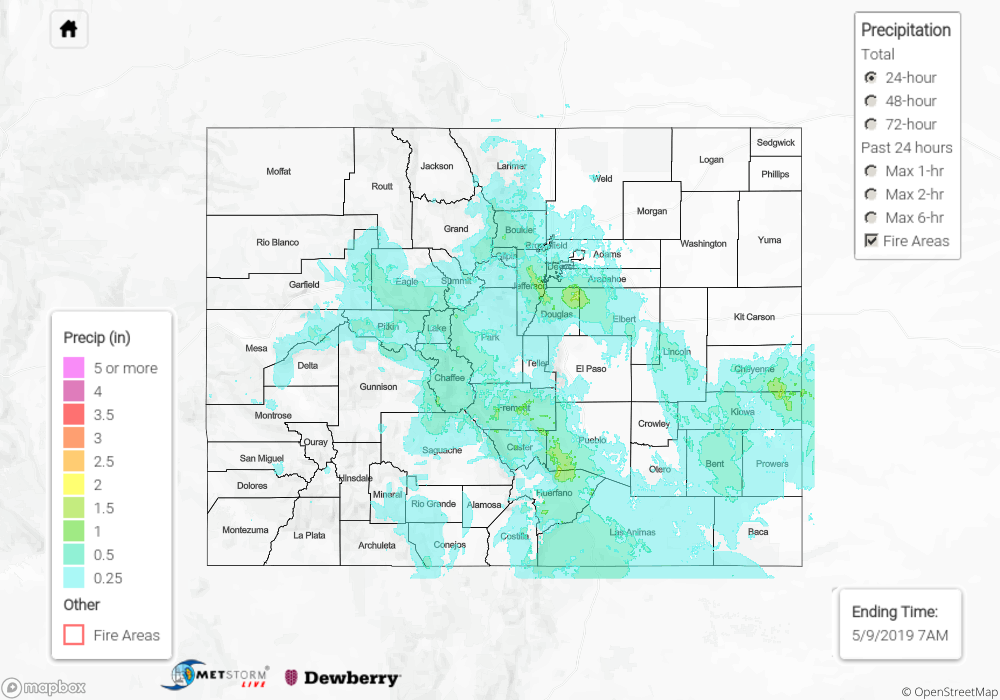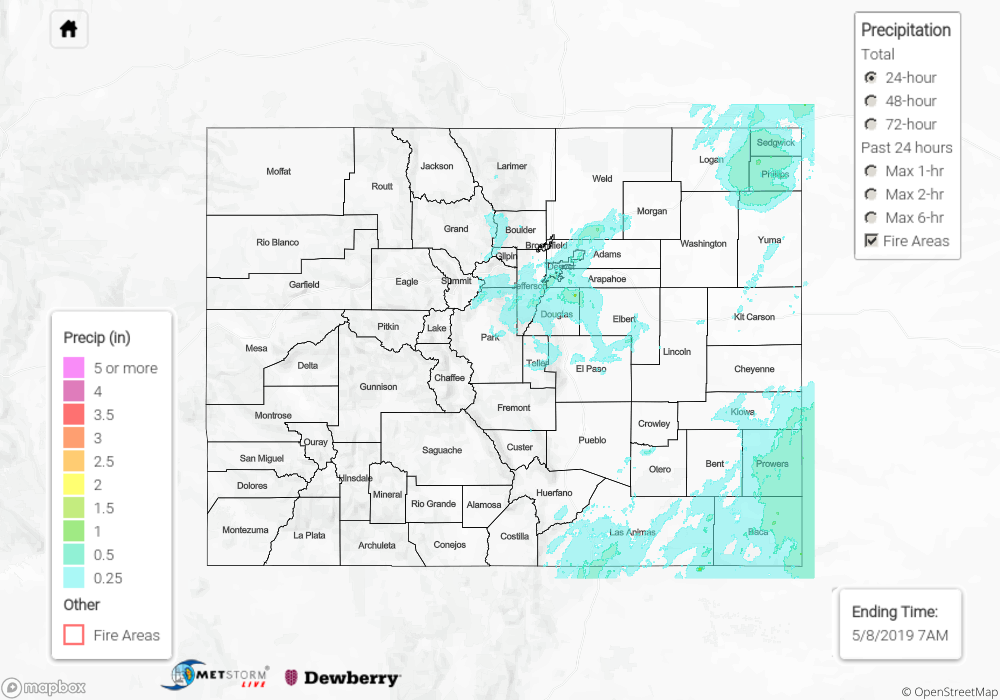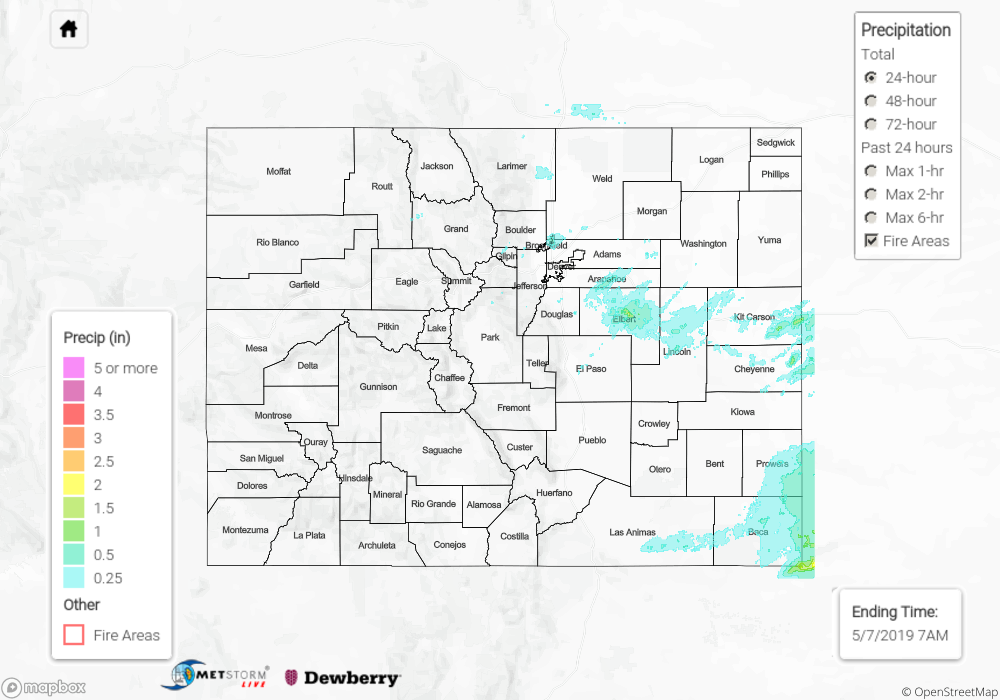Issue Date: Thursday, May 9th, 2019
Issue Time: 9:05AM MDT
Summary:
Winter continued yesterday with rain, snow and rain turning to snow overnight. Mid-level energy and a passing cold front helped the crossover from rain to snow occur during the afternoon hours. The cold, northerly winds and nightfall dropped the freezing level below 6K feet, so there were snow reports in the Urban Corridor this morning. However, not much was sticking to the ground. Rainy conditions once again started the day over the eastern plains. Radar indicates up to 1.5 inches fell. An impressive 1.75 inches fell in 3 hours over Beulah. The highest snow report was in Westcliffe where 12 inches fell.
It has been quite the cool, wet start to spring, but after last year, this moisture is welcomed. I’ll leave this SPM with a little trivia. What was the latest date of measurable snow in Denver? Click here for the answer.
To see precipitation totals over in your neighborhood on Wednesday, scroll down to the State Precipitation Map below. Note the 4 inches in Parker is another error this morning.
Click Here For Map Overview




